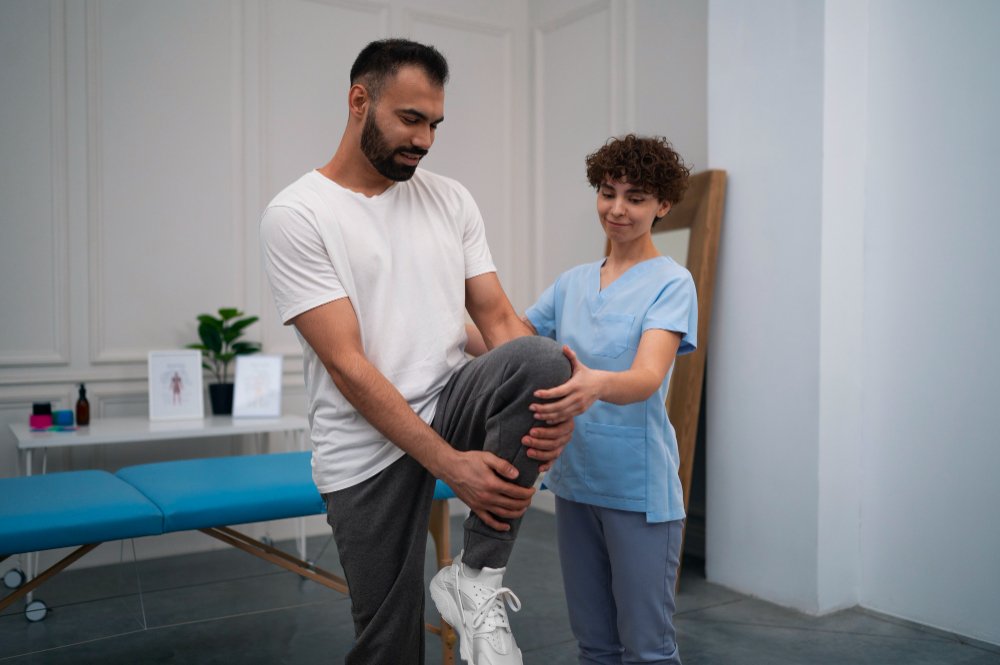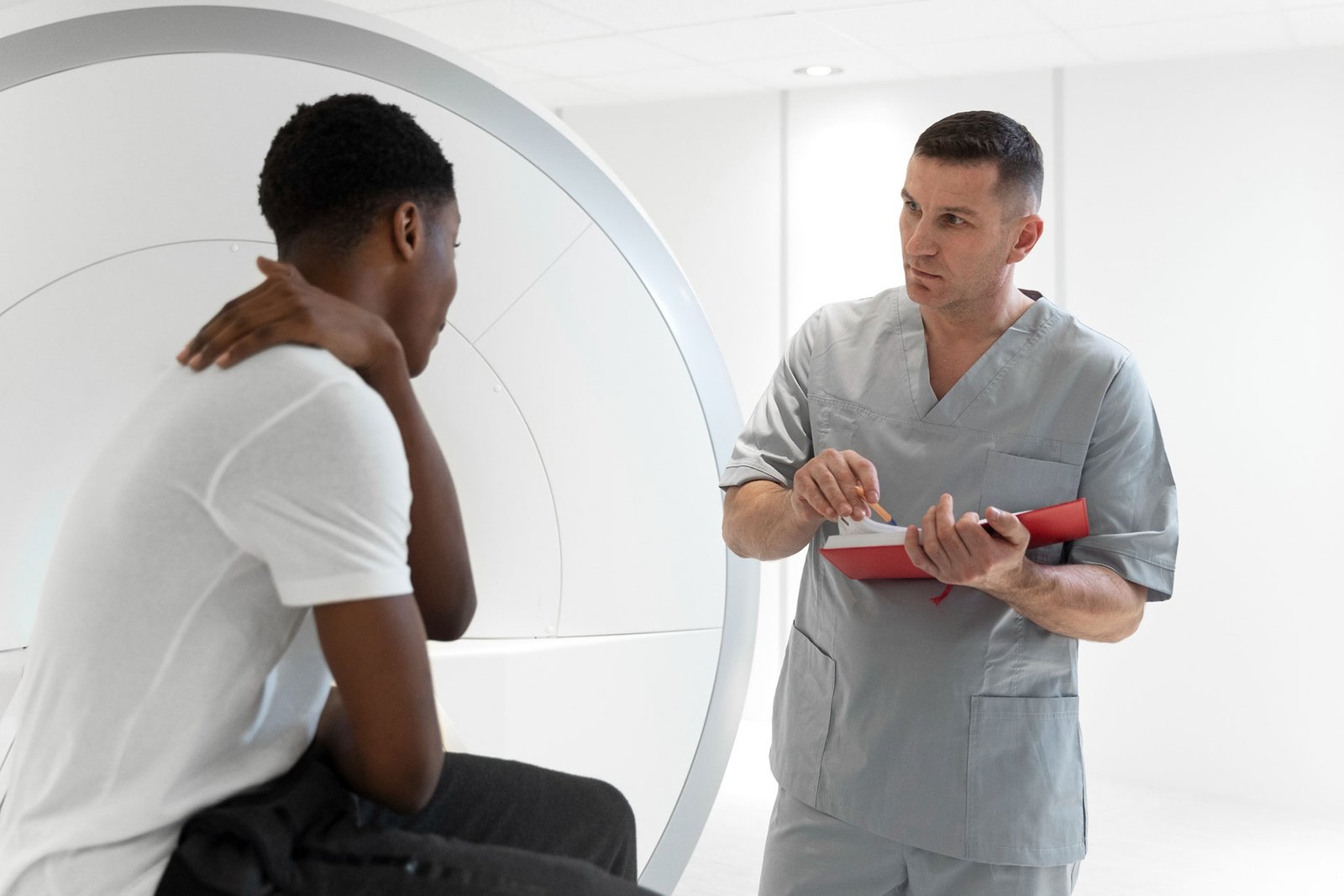Physical Therapy: How Your Muscles, Nerves, and Posture Play a Role in Digestive Healing
When we think of gut health, we usually imagine probiotics, dietary changes, or perhaps a visit to a gastroenterologist. But what if your physical therapist also held part of the solution to your digestive issues?
It may sound unconventional, but recent clinical observations and anatomical insights suggest a strong connection between physical therapy and gut health recovery—a link that’s been largely ignored in mainstream health discussions.
This article dives deep into the physiological, neurological, and biomechanical connections between the musculoskeletal system and the gastrointestinal (GI) tract—and how physical therapy can aid in restoring digestive function, particularly in people suffering from chronic bloating, constipation, IBS, and related conditions.
Understanding the Gut-Muscle-Nerve Connection
Your digestive system is more than just a set of tubes processing food. It’s a highly coordinated system of muscles, nerves, blood vessels, and organs. Several lesser-known factors affect its performance, including:
1. Diaphragm Dysfunction & Physical Therapy
The diaphragm is the main breathing muscle, but it also plays a vital role in digestion. Its rhythmic movement helps maintain intra-abdominal pressure, support peristalsis (the wave-like motion of the intestines), and promote lymphatic drainage.
When the diaphragm becomes restricted due to poor posture, stress, or shallow breathing, the gut’s natural motility can become compromised, leading to bloating, gas, and irregular bowel movements.
2. Vagus Nerve Stimulation
The vagus nerve controls the “rest and digest” functions of the parasympathetic nervous system. It directly influences stomach acid secretion, digestive enzyme release, and gut motility.
Physical therapists trained in manual vagus nerve stimulation, such as cervical mobilization or deep diaphragmatic techniques, can activate this nerve and enhance digestive function—something commonly overlooked in standard GI care.
3. Pelvic Floor Dysfunction
People often associate the pelvic floor with urinary incontinence or childbirth recovery, but this muscle group also supports proper defecation. Weak or overly tight pelvic floor muscles can contribute to chronic constipation and rectal pain.
Specialized physical therapy can retrain these muscles using biofeedback, manual release, and coordination exercises, offering relief from conditions like dyssynergic defecation.

How Physical Therapy Supports Gut Health Recovery
Here’s how physical therapy works beyond joint pain and mobility—to improve digestive function:
1. Postural Realignment
Chronic slouching compresses the abdominal cavity and inhibits organ function. A rounded upper back and forward head posture (often caused by prolonged sitting or phone use) can reduce diaphragm excursion and slow bowel activity.
Physical therapy focuses on:
Spinal alignment
Thoracic mobility
Core strengthening
This relieves pressure on abdominal organs and facilitates better digestion.
2. Breathing Retraining with Physical Therapy
Most people breathe shallowly from the chest, especially during times of stress. Physical therapists teach diaphragmatic breathing techniques that not only improve oxygenation but also massage internal organs and activate the parasympathetic system for digestion.
Breathing exercises can be integrated into treatment for:
Irritable Bowel Syndrome (IBS)
Functional dyspepsia
Chronic constipation
3. Visceral Mobilization and Physical Therapy
Some advanced physical therapists are trained in visceral manipulation, a gentle hands-on technique targeting the movement of internal organs. This can release adhesions, improve blood flow, and restore proper organ positioning—especially useful after abdominal surgeries or chronic inflammation.
4. Stress and Trauma Recovery
PTs often help patients process chronic stress and somatic tension stored in the body. Since emotional stress can directly affect gut motility and microbiome balance, physical therapy provides a body-based way to calm the nervous system and reduce GI symptoms.
Who Can Benefit from PT for Gut Health?
Physical therapy as a gut health tool is particularly beneficial for:
Individuals with IBS, SIBO, or functional GI disorders
Post-operative patients (C-section, abdominal surgery, etc.)
People with chronic constipation or bloating
Women recovering from pelvic floor trauma
High-stress individuals with symptoms of gut-brain axis dysregulation
The Future: Integrative Models of Care
While the medical world tends to compartmentalize care—gastroenterology, neurology, musculoskeletal therapy—the body doesn’t operate in silos. Physical therapists, when included in integrative care teams, can provide non-invasive, drug-free relief for GI issues that have long eluded traditional solutions.
Collaborations between GI specialists, PTs, and nutritionists are beginning to gain traction in functional medicine clinics—but mainstream adoption is still lagging.
Final Thoughts
Gut health is not just about what you eat—it’s also about how your body moves, breathes, and holds tension. Physical therapy offers powerful tools to address the mechanical and neurological factors that influence digestion.
If you’ve been battling persistent digestive issues and traditional treatments haven’t worked, it might be time to consider the missing piece: a well-trained physical therapist who understands the hidden link between movement and gut health.

Pingback: Role of Fascia Health in Men’s Physical Performance and Pain Management - SuperfitLife